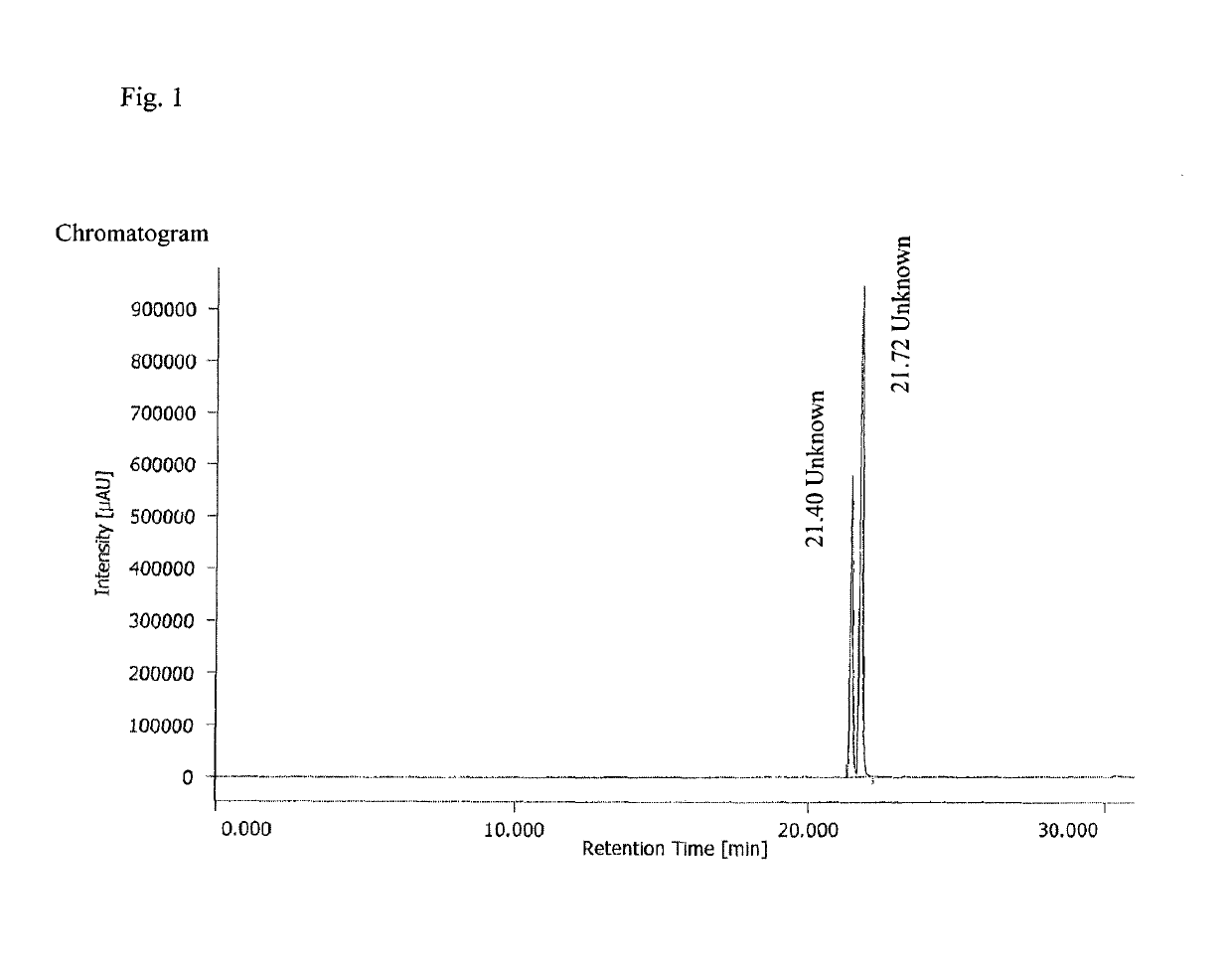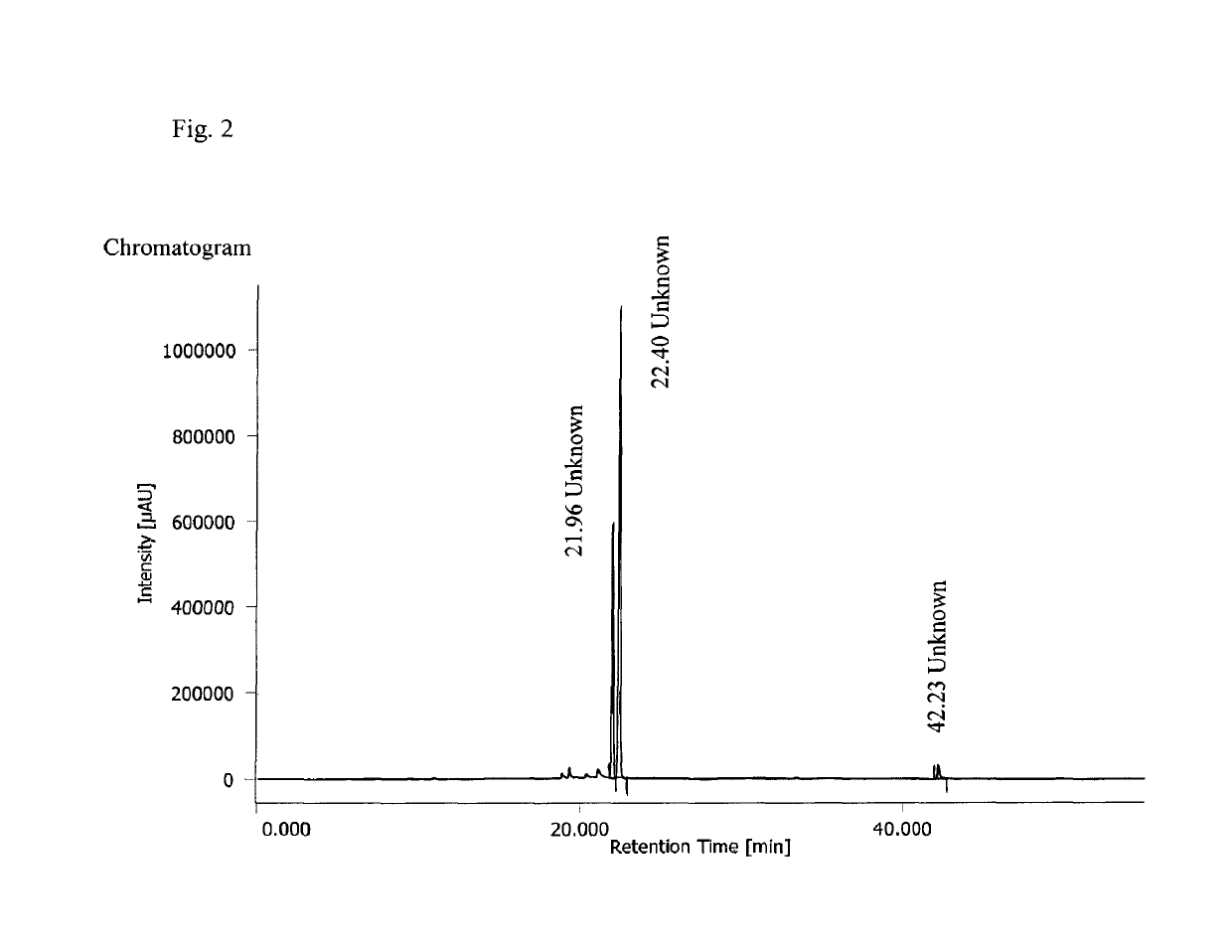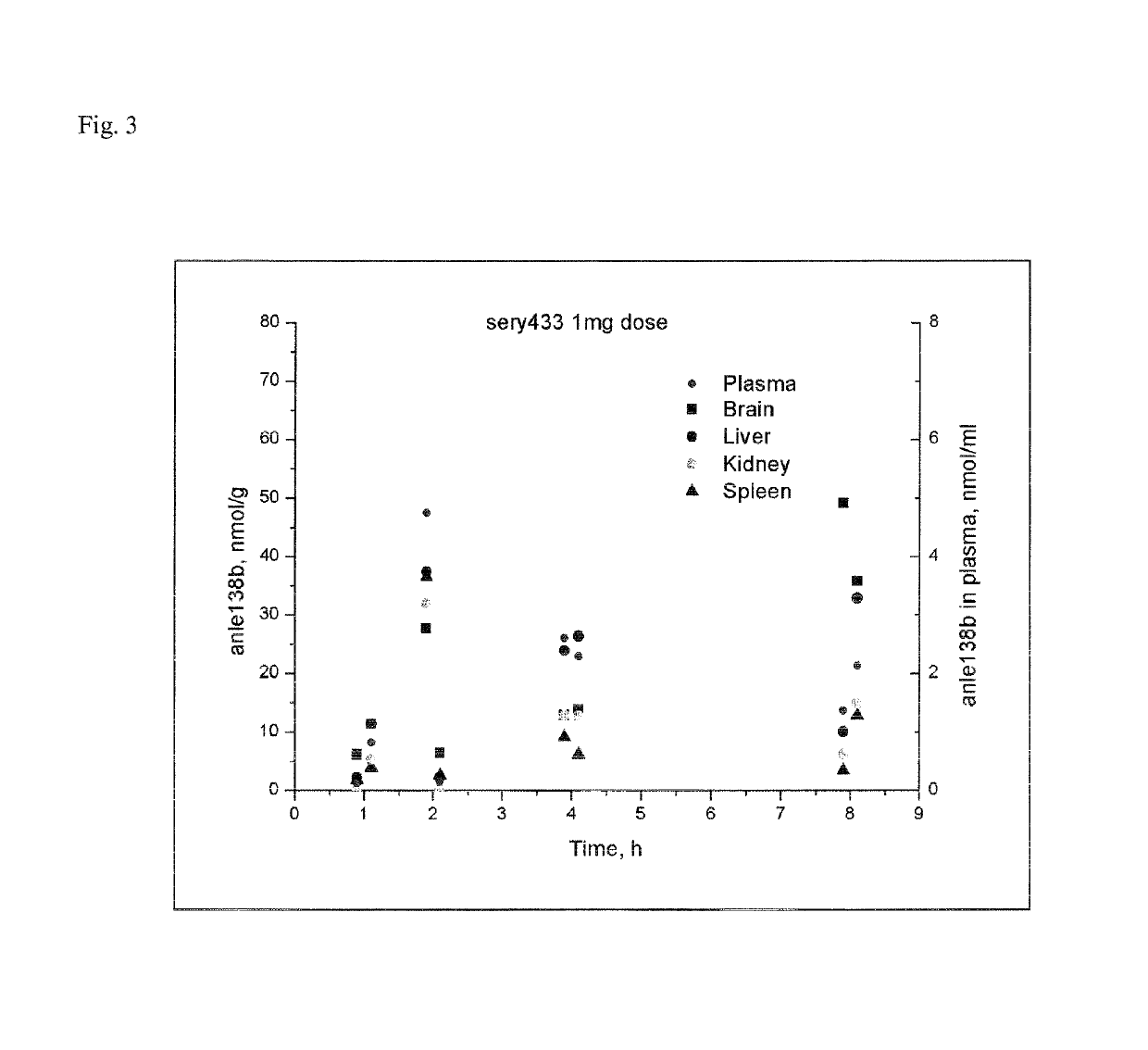Water-soluble derivatives of 3,5-diphenyl-diazole compounds
a technology of diazole and diazole, which is applied in the field of water-soluble derivatives of 3,5-diphenyldiazole compounds, can solve the problems of abnormal protein formation, large amount of prion form chain reaction, and inability to cure, and achieve stable and suitable prodrugs for oral use, stable and suitable effects of water solubility
- Summary
- Abstract
- Description
- Claims
- Application Information
AI Technical Summary
Benefits of technology
Problems solved by technology
Method used
Image
Examples
example 1
of Sery433, a Prodrug of anle138b to be Cleaved by IAP
[0107]
Di-tert-butyl chloromethyl phosphate (sery430)
[0108]The compound sery433 was prepared according to published protocol (7). To a mixture of di-tert-butyl potassium phosphate (35 g, 141 mmol), K2HPO4.3H2O (127 g, 557 mmol), n-Bu4NHSO4 (4 g, 11 mmol), H2O (125 ml) and tBuOMe (170 ml) a solution of chloromethyl chlorosulfate (35 g, 212 mmol) in tBuOMe (35 ml) was added dropwise with continuous vigorous stirring in 25 minutes at 0° C. After the addition was completed stirring was continued for 2 hours at room temperature (the reaction mixture was cooled if internal temperature exceeded 30° C.). The reaction mixture was quenched with H2O (350 ml) and tBuOMe (200 ml), the organic phase was separated, washed with aqueous 1M K2HPO4 solution (200 ml), water (200 ml), brine (50 ml) and dried over Na2SO4. After sodium sulfate was filtered, n-Bu3N (3 ml) was added to the solution and the solution was concentrated under a reduced pressur...
example 2
of anle423b (Prodrug of anle253b)
[0116]
Anle423a
[0117]To a mixture of anle253b (500 mg, 1.46 mmol), Cs2CO3 (620 mg, 1.9 mmol) in DMSO (5 ml) di-tert-butyl chloromethyl phosphate (525 mg, 1.9 mmol) was added in one portion. After 15 hours of stirring at room temperature completeness of reaction was shown by Thin layer chromatography (TLC) (SiO2, hexane:EtOAc=2:1, Rf educt 0.33, Rf product 0.18). The reaction mixture was diluted with water (30 ml) and extracted with ethyl acetate (2×15 ml). The combined extracts were washed with water (10 ml), brine (10 ml), dried over Na2SO4, and concentrated under reduced pressure to provide the product as oil (1.08 g). The product was used in next step without further purification.
Anle423b (Diammonium Salt)
[0118]To a cooled suspension of anle423a (1.08 g) in DCM (10 ml) TFA (2 ml) was added within 1 minute with continuous vigorous stirring at 0° C. and the reaction mixtures was stirred at 0° C. for 8 hours. The mixture was filtered (GHP 0.45 μm), di...
example 8
ubility Test
[0152]The solubility of each compound in the water was evaluated by following protocol. Deionized water (1 ml) was added into glass tube containing 10 mg of compound. After shaking for 10 minutes the sample was visually inspected and formation of solution or suspension was documented. Results are summarized in the table below.
[0153]
CompoundResult of solubility testsery433soluble, clear solution; max.solubility about 150 mg / mlsery435insoluble, suspensionsery447insoluble, suspensionsery453soluble, clear solution; max.solubility about 150 mg / mlanle380insoluble, suspensionanle138binsoluble (only 68.6 ng / ml soluble)
[0154]The results show that sery433 and sery453 are approx. 2.19 million times more soluble in water than anle138b.
PUM
| Property | Measurement | Unit |
|---|---|---|
| water-solubility | aaaaa | aaaaa |
| body weight | aaaaa | aaaaa |
| body weight | aaaaa | aaaaa |
Abstract
Description
Claims
Application Information
 Login to View More
Login to View More - R&D
- Intellectual Property
- Life Sciences
- Materials
- Tech Scout
- Unparalleled Data Quality
- Higher Quality Content
- 60% Fewer Hallucinations
Browse by: Latest US Patents, China's latest patents, Technical Efficacy Thesaurus, Application Domain, Technology Topic, Popular Technical Reports.
© 2025 PatSnap. All rights reserved.Legal|Privacy policy|Modern Slavery Act Transparency Statement|Sitemap|About US| Contact US: help@patsnap.com



